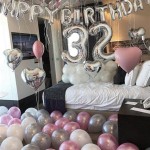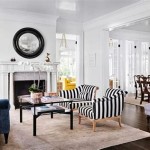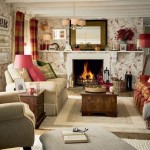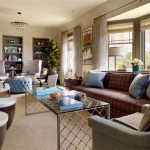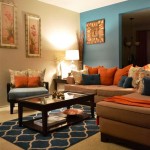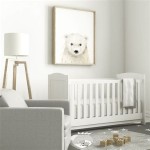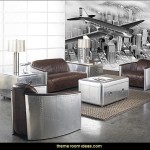How To Decorate a Bedroom with Fairy Lights
Fairy lights, also known as string lights or twinkle lights, offer a versatile and readily accessible method for enhancing the ambiance of a bedroom. Their subtle illumination and malleable form factor allow for creative implementations that can transform a mundane space into a personalized and inviting haven. The successful integration of fairy lights into bedroom decor hinges on thoughtful planning and an understanding of the various aesthetic and functional considerations involved.
The selection of appropriate fairy lights is the initial step in the decorating process. These lights are available in a wide array of styles, including incandescent, LED, battery-operated, and plug-in models. LED fairy lights are generally preferred due to their energy efficiency and lower heat output, making them safer for extended use. The color temperature of the lights is also a significant factor. Warm white lights tend to create a cozy and relaxing atmosphere, while cool white lights offer a brighter, more modern feel. Multi-colored lights can add a whimsical touch, but their use should be carefully considered to avoid overwhelming the space. The length of the string is also crucial; accurate measurements of the intended placement area are essential to ensure sufficient coverage without excessive slack or the need for multiple extension cords. Cord color, from clear to dark, also has aesthetic implications, impacting how the lights blend or contrast with the surrounding decor.
Incorporating Fairy Lights Around the Bed
One of the most popular applications of fairy lights in a bedroom is around the bed. This can be achieved in several ways, each offering a distinct visual effect. A common approach is to drape the lights across the headboard, either directly on the surface or interwoven within its design. This creates a soft, radiant backdrop that enhances the bed's focal point. For beds without headboards, lights can be hung from the wall behind the bed, mimicking the effect of a headboard or creating an artistic wall display. Securing the lights can be accomplished with small, removable adhesive hooks or clips to avoid damaging the wall surface. Another option is to drape the lights along the bed frame, creating a subtle glow that emanates from beneath the bed. This approach is particularly effective with platform beds or those with minimal under-bed storage.
Canopy beds provide a unique opportunity to showcase fairy lights. The lights can be strung along the canopy frame, creating a dreamy and ethereal atmosphere. Wrapping the lights around the canopy posts is another approach, accentuating the bed's structure and adding a vertical element to the design. Consider the material of the canopy when choosing lights; delicate fabrics may require battery-operated LED lights with low heat output to prevent any potential fire hazards. Ensure that the lights are securely fastened to the canopy frame to prevent them from sagging or posing a safety risk. The density of the lights can also be adjusted to achieve the desired level of illumination and visual impact.
For a more dramatic effect, fairy lights can be used to create a curtain of light behind the bed. This involves hanging multiple strands of lights vertically from a rod or beam, creating a shimmering backdrop. This approach is particularly effective in larger bedrooms with high ceilings, as it adds a sense of scale and visual interest. The spacing between the strands can be adjusted to control the density of the light curtain. Experiment with different lengths of lights to create a cascading effect. The curtain of lights can also be used as a room divider, creating a separate sleeping area within a larger space. Ensure that the hanging mechanism is sturdy and secure to prevent the lights from falling.
Using Fairy Lights on Walls and Existing Decor
Fairy lights are not limited to the bed area; they can also be used to enhance the walls and other decorative elements within the bedroom. One approach is to create a gallery wall using fairy lights. This involves hanging the lights in a grid or pattern around existing artwork or photographs, highlighting the display and adding a layer of illumination. Small clips or clothespins can be used to attach the photos to the lights, creating a personalized and dynamic display. The lights can also be used to outline the edges of mirrors, creating a visually striking and flattering effect. This is particularly effective in bathrooms or dressing areas where additional lighting is beneficial.
Fairy lights can also be integrated into existing decorative elements, such as plants, shelves, and curtains. Weaving the lights through the foliage of indoor plants creates a whimsical and enchanting effect, transforming ordinary greenery into illuminated sculptures. This is particularly effective with trailing plants, such as ivy or pothos. Draping the lights across bookshelves or along the edges of shelves adds a subtle glow that highlights the displayed items and creates a sense of warmth. Attaching the lights to the back of sheer curtains creates a soft, diffused light that gently illuminates the room. This approach is particularly effective in bedrooms with large windows, as it adds a layer of privacy and visual interest. Ensure that the lights are securely attached to the decorative elements to prevent them from falling or posing a safety risk. Consider the material of the decorative elements when choosing lights; delicate fabrics or flammable materials may require battery-operated LED lights with low heat output.
Another option to decorate walls is to create shapes or words through the use of fairy lights, such as a heart or an inspirational quote. These can be created using wire or sturdy paper as a base and then attaching the lights to it with glue or clips. Hanging lighted garlands or wreaths are also a good option to add a touch of festivity to the room.
Integrating Functionality and Safety Considerations
Beyond their aesthetic appeal, fairy lights can also serve a functional purpose in the bedroom. They can be used as a substitute for traditional nightlights, providing a soft and gentle illumination that is less harsh on the eyes. This is particularly beneficial for children or individuals who are sensitive to bright light. Placing a string of lights along the baseboard or under the bed can serve as a subtle guide light, helping to navigate the room in the dark. Fairy lights can also be used to illuminate specific areas, such as a reading nook or a writing desk, providing task lighting without the need for a bulky lamp. By layering fairy lights with other light sources, such as table lamps or overhead fixtures, it is possible to create a well-balanced and visually appealing lighting scheme.
Safety is a paramount concern when using fairy lights in the bedroom. It is essential to choose lights that are specifically designed for indoor use and that meet relevant safety standards. Inspect the lights regularly for any signs of damage, such as frayed wires or cracked bulbs. Avoid overloading electrical outlets by plugging too many strings of lights into a single outlet or extension cord. Use surge protectors to protect the lights from power surges. Never leave fairy lights unattended or switched on while sleeping. Keep the lights away from flammable materials, such as curtains, bedding, and paper. When using battery-operated lights, ensure that the batteries are properly installed and that they are replaced regularly. Dispose of used batteries properly, following local regulations. Children and pets should be supervised when near fairy lights to prevent them from chewing on the wires or swallowing small parts. Secure loose wires to prevent tripping hazards. By following these safety precautions, it is possible to enjoy the beauty and functionality of fairy lights without compromising safety.
Timer-controlled plugs are a convenient way to automate light functionality. Automated on/off cycles promote energy conservation and reduce the need for manual intervention. They also prevent the lights from being left on for extended periods unintentionally. Dimmer switches offer greater control over the intensity of the lights. Adjusting the brightness to suit different ambient conditions creates a better visual experience.
Ultimately, decorating a bedroom with fairy lights is about creating a space that reflects individuality and promotes relaxation. By carefully considering the various options and following safety precautions, it is possible to transform any bedroom into a magical and inviting sanctuary.

How To Decorate Fairy Lights In Bedroom Beginner S Lighting Guide

Bedroom Fairy Light Ideas For Your Home Design Cafe

How To Decorate Fairy Lights In Bedroom Beginner S Lighting Guide

Fairy Lights Dorm Room Decor Inspiration Bedroom

66 Inspiring Ideas For Lights In The Bedroom Room Diy

How To Decorate Your Home With Fairy Lights Homelane Blog

How To Decorate Your Kids Room With Fairy Lights Petit Small

How To Decorate Fairy Lights In Bedroom Beginner S Lighting Guide

100 Diy Room Decor Ideas That Work For Any Bedroom Easy Home

6 Trendy Bedroom Decor Ideas For Teenage Girls To Match Every Aestheti Ollny
Related Posts

